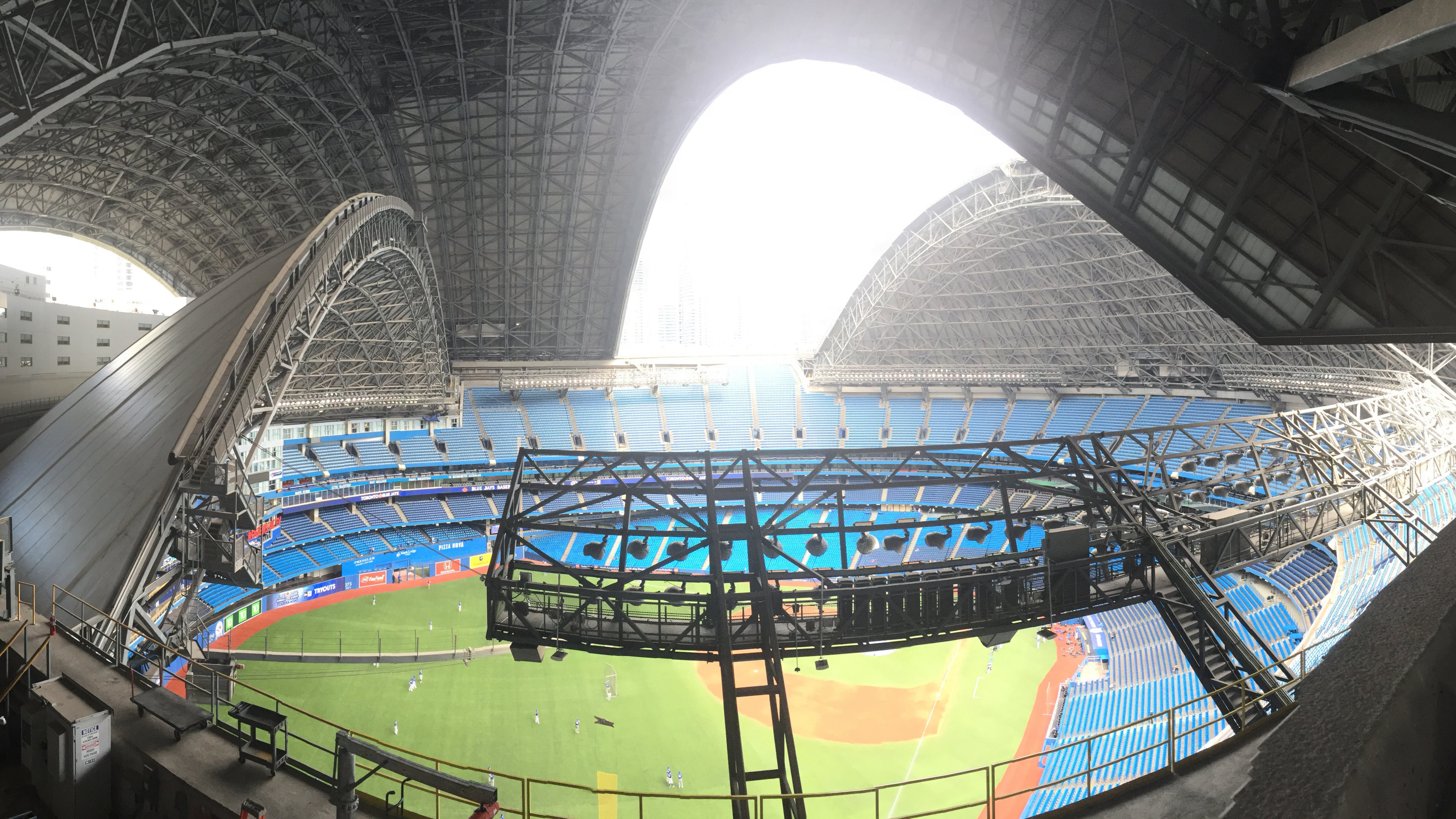By Sheila Kennedy, Contributing Writer
Toronto’s Rogers Centre was christened in 1989 with the name SkyDome in honor of its greatest architectural asset: the world’s first fully retractable, motorized roof. The immense dome-shaped roof covers eight acres and reaches a height of 282 ft. at its center. For more than two-and-a-half decades, three movable sections were opened and closed smoothly on command.
Inevitably, the combination of time and wear took its toll. The roof’s maintenance and operation became extremely difficult, and its legacy control system had become increasingly unreliable. In fact, it eventually was necessary to operate the roof below full speed to avoid overtaxing the aging system. An overhaul would be required to preserve the iconic roof and restore it to secure, reliable, efficient operation – all the while maximizing uptime to avoid disrupting planned sports and entertainment events.
In 2015, an enormous retrofit of the roof infrastructure was commissioned, including a new operations technology (OT) network and modern control system. “A lot of the components and parts used to control and drive the roof were no longer being manufactured,” says Dave McCormick, manager of engineering at Rogers Centre. “Basically, what this project was about was getting this structure and the operating system back to a state where it can be sustained for the next 15 to 20 years.”
Rogers Centre selected the team of New Electric, acting as general and electrical contractor, and JMP Engineering, a Rockwell Automation Solution Partner. New Electric brought intimate knowledge of the facility and Rogers’ best practices. JMP Engineering provided the necessary controls system design, engineering services and controls system/SCADA implementation.
Existing Challenges Inspire New Goals
When opening or closing, the roof had to be able to move 11,000 tons of steel quickly, reliably and precisely with up to 40-mph winds blowing from varying directions. The Rogers Centre project team needed a control system that could open and close the roof up to 400 times per year safely and consistently in less than 25 min. It had to be user-friendly, and it had to provide high availability, fault tolerance, self-diagnostics and a mobility solution for troubleshooting and exception-based reporting.
Minimizing skew differential is vital. Without the ability to control panel skew, the roof panels would become lodged, resulting in roof misalignment and the inability to close roof gaps effectively, leaving the stadium open to environmental elements.
The size, weight and height of the roof required precise mathematical calculations of the effect of wind while in motion to manage the skew properly. In addition, the drives, motors and braking resistors needed to be sized accordingly. The networking infrastructure also had to be secure, robust and reliable.
Access to immediate local support was essential, and the solution needed to be expandable and have a long product life cycle.
Timing was another concern. The Toronto landmark, home of the Blue Jays major-league baseball team, keeps a busy event calendar year-round. The project team needed to make every effort to avoid disrupting the events while installing, testing and commissioning the new roof control systems. Weather delays also were to be expected, as the roof needed to remain closed during unfavorable conditions.
Competitive Selection Reveals Optimal Solution
The Rogers engineering team developed a detailed functional specification for the roof controls architecture and evaluated proposed solutions.
New Electric teamed with engineering services company JMP Engineering to propose a Rockwell Automation-based solution. JMP Engineering designed a reliable and easy-to-maintain system based on Rockwell Automation technology products. Application and parts support would be provided by JMP Engineering and Rockwell Automation local distributor, Gerrie Electric.

